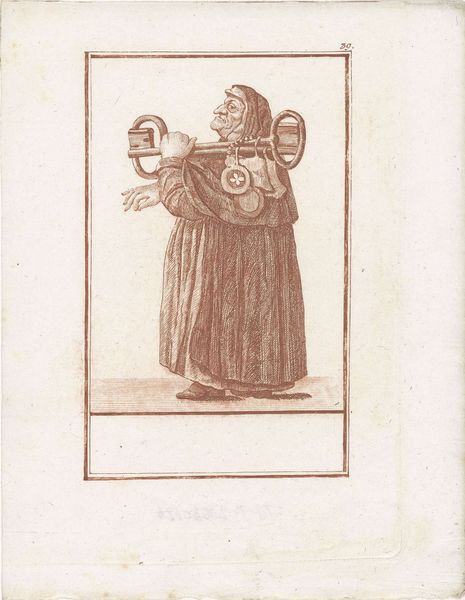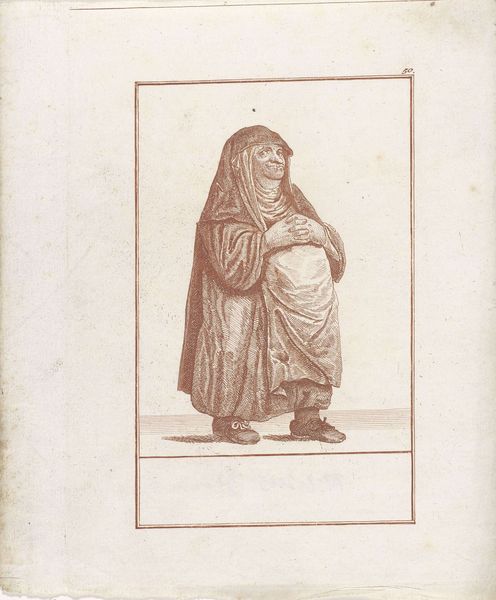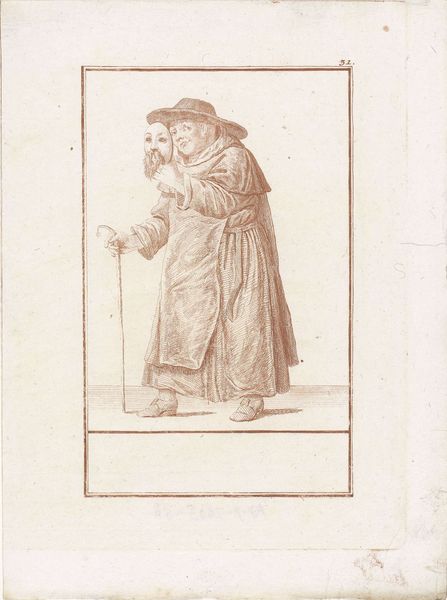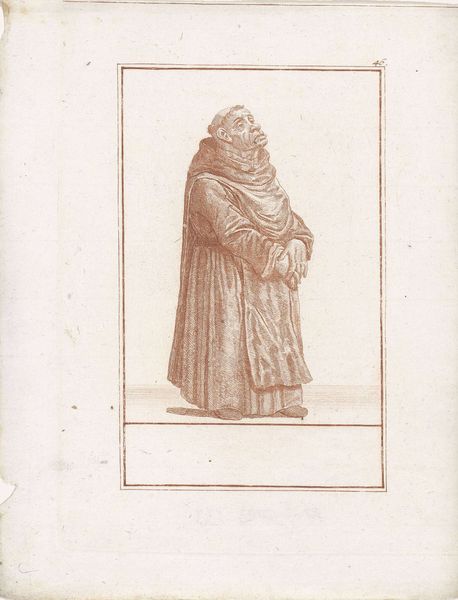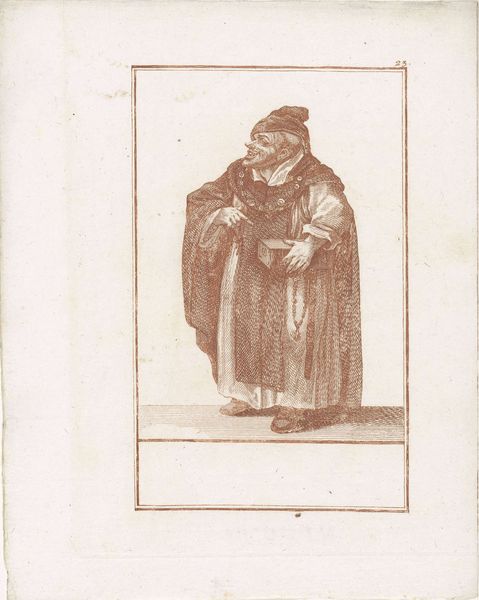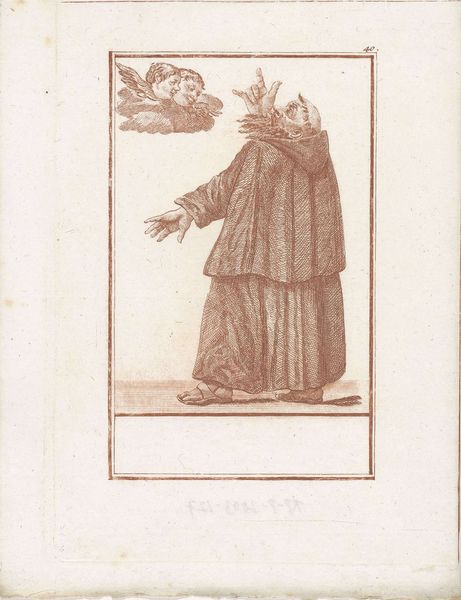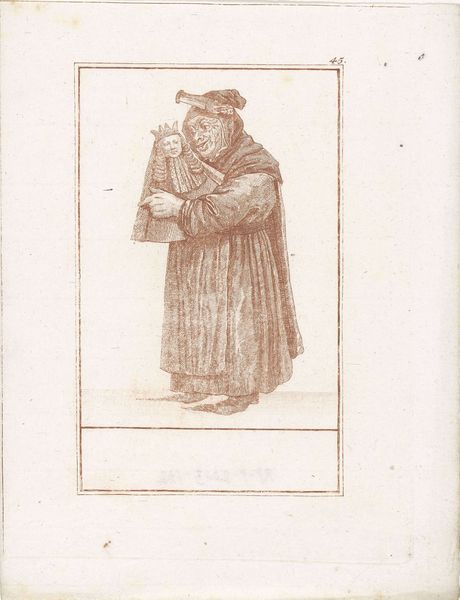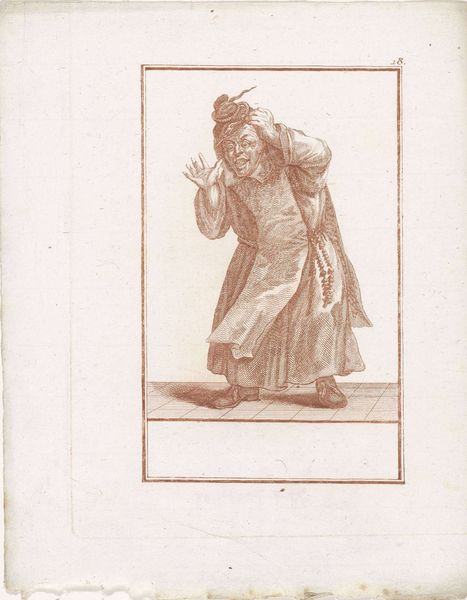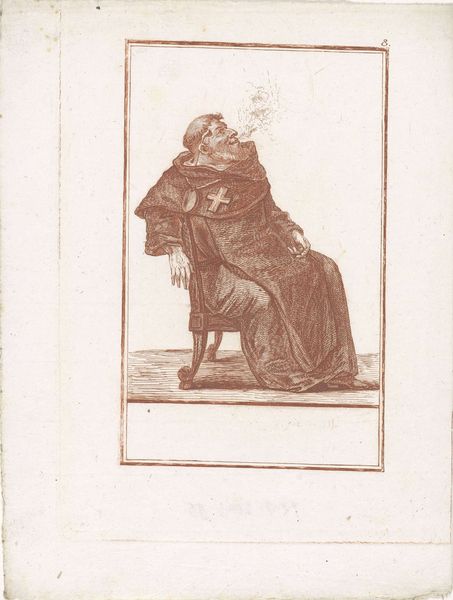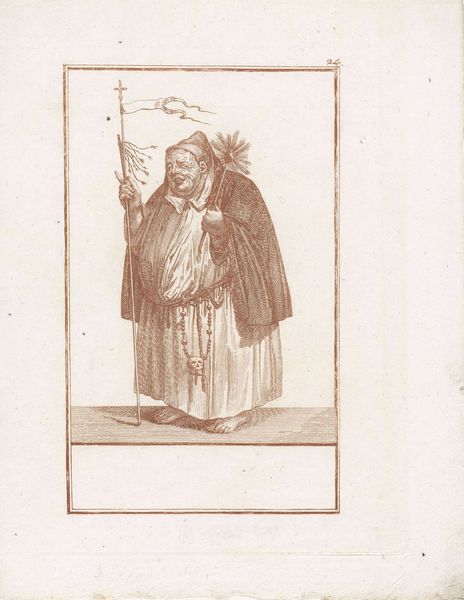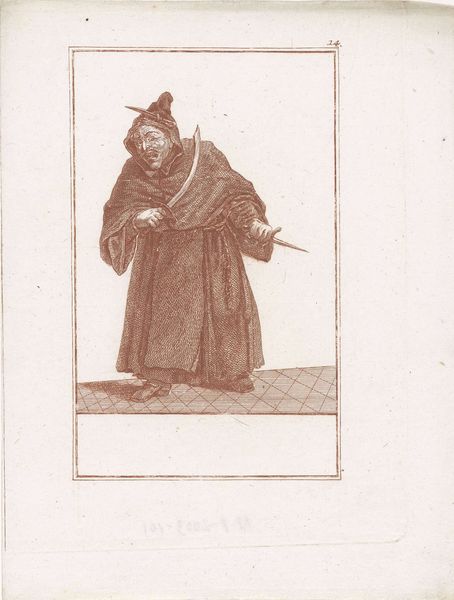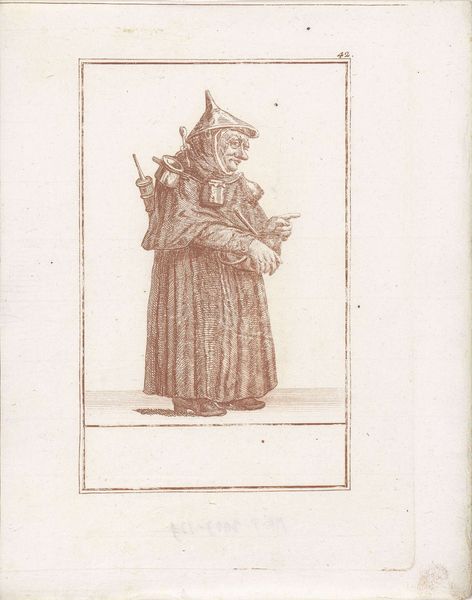
print, etching
#
portrait
#
baroque
# print
#
etching
#
old engraving style
#
figuration
#
genre-painting
Dimensions: height 228 mm, width 185 mm
Copyright: Rijks Museum: Open Domain
This etching of a monk with an apron was made by Jacob Gole in the Netherlands, sometime between 1660 and 1737. It depicts a figure in a monastic habit, but with an apron suggesting a more domestic role, which could point to the changing social status of religious figures in the Dutch Golden Age. The image's meaning is created through a combination of visual cues and cultural references. Monastic orders in the Netherlands, like elsewhere in Europe, had a complex relationship with the broader society. This image could be read as a commentary on the role of the church and its members in everyday life, perhaps suggesting a shift from spiritual authority to more mundane activities. Understanding this etching requires us to consider the social history of the Netherlands at the time, the role of religious institutions, and the changing attitudes towards them. By exploring these contexts, we can better appreciate the layers of meaning embedded in this seemingly simple image. The tools of the historian, from archival research to social and cultural analysis, enable us to enrich our understanding of art as something deeply embedded in specific social and institutional circumstances.
Comments
No comments
Be the first to comment and join the conversation on the ultimate creative platform.
